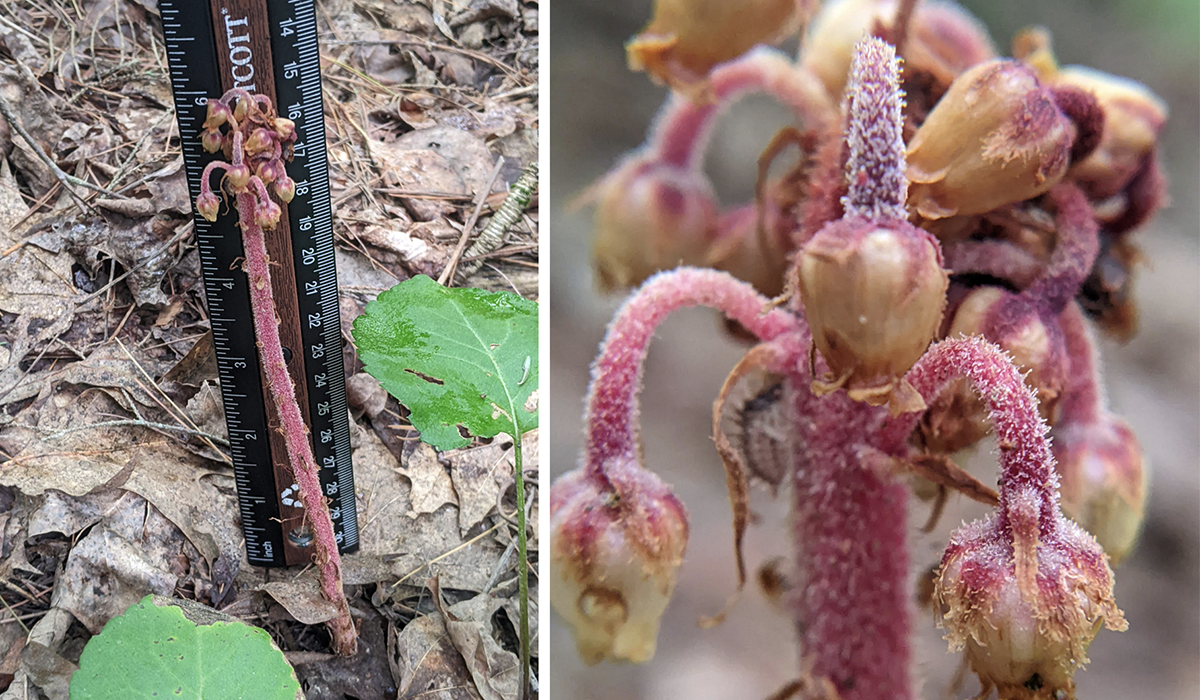- Division of Fisheries and Wildlife
Media Contact
Media Contact, MassWildlife

Amateur botanist Skye van der Laan was exploring in the Berkshires when he noticed an odd-looking plant and decided to contact the Division of Fisheries and Wildlife (MassWildlife). MassWildlife’s State Botanist Robert Wernerehl and retired MassWildlife Biologist Tony Gola met Skye on site to view the plant and confirmed his discovery of the first ever Massachusetts record of pine-drops (Pterospora andromedea).
“The discovery of a new native plant here in Massachusetts is extraordinary,” says Wernerehl. “We have more active professional botanists per square mile than almost any other state, so these types of discoveries are rare—yet they do happen.”
Pine-drops is an unusual plant. It contains no chlorophyll and relies on mycorrhizal fungi in the soil for nutrients. This lifestyle is similar to the common forest plant called ghost pipe (Monotropa uniflora)—the short, creamy-white flower that emerges after rains in mid-summer. These two species are closely related and in the same botanical group within the blueberry family (Ericaceae).
Pine-drops is most common in the Rocky Mountains and its range is not continuous across North America. The eastern populations are small, scattered, and entirely separated from the larger population in the west. In the Northeastern U.S., pine-drops is found in Vermont, New Hampshire, and New York. It is listed as Endangered in each of those states.
The seeds of the pine-drops are light and dispersed by strong wind (the scientific name means “winged seed”). Even with this convenient dispersal method, pine-drops does not spread easily. When they land, the tiny seeds must immediately colonize a special type of fungus in order to germinate, and the chances of that occurring are extremely small.
It is unclear whether more pine-drops will be discovered in the Commonwealth or why it went undetected for so long. “The pine-drops prefers dry pine forests, and we have plenty of that,” explains Wernerehl. “We’re grateful to the sharp eyes and careful observations of naturalists like Skye that help us expand our understanding of biodiversity in the Commonwealth.”
